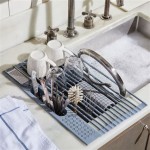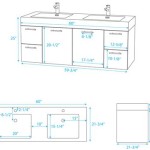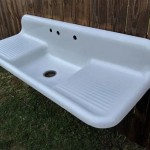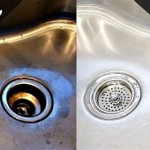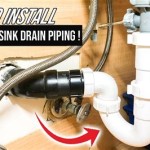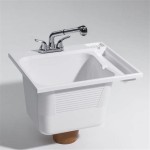Understanding 3-Stage Under Sink Water Filters: A Comprehensive Guide
Access to clean and safe drinking water is a fundamental necessity. While municipal water supplies undergo treatment processes, contaminants can still be present, impacting taste, odor, and potentially posing health risks. 3-stage under sink water filters offer a practical and effective solution for improving water quality directly at the point of use. This article provides a detailed overview of 3-stage under sink water filtration systems, explaining their components, functionality, benefits, and considerations for selection and maintenance.
An under sink water filter system is installed directly beneath a kitchen or bathroom sink, connecting to the cold water supply line. It is a point-of-use (POU) system, meaning it treats water only at the specific faucet to which it is connected. The "3-stage" designation refers to the three distinct filtration steps involved in removing contaminants. These systems are often preferred for their compact design, ease of installation, and ability to deliver filtered water on demand.
Key Point 1: The Three Stages of Filtration
The efficacy of a 3-stage under sink water filter lies in its sequential filtration process. Each stage targets specific types of contaminants, resulting in a more thorough purification compared to single-stage filters. The typical stages are as follows:
Stage 1: Sediment Filter
The initial stage typically involves a sediment filter. This component is designed to remove particulate matter from the water supply. Sediment can include sand, silt, rust, clay, and other suspended solids. These particles not only affect the water's clarity and taste but can also clog subsequent filters, reducing their efficiency and lifespan.
Sediment filters are commonly constructed of spun polypropylene, pleated polyester, or wound string. The pore size of the filter determines the size of particles it can capture, typically measured in microns. A lower micron rating indicates a finer filter and the ability to remove smaller particles. Common micron ratings for sediment filters range from 1 to 50 microns. The choice of micron rating depends on the level of sedimentation in the water supply. Areas with known sediment issues might require a lower micron rating filter.
Stage 2: Activated Carbon Filter
The second stage almost universally employs an activated carbon filter. Activated carbon is a porous material with a large surface area, providing numerous binding sites for contaminants. This filter primarily targets chlorine, chloramine, volatile organic compounds (VOCs), pesticides, herbicides, and other chemicals that contribute to unpleasant tastes and odors. It also improves the water's clarity and overall palatability.
There are two main types of activated carbon filters: Granular Activated Carbon (GAC) and Carbon Block. GAC filters consist of loose granules of activated carbon, whereas carbon block filters are made from compressed activated carbon. Carbon block filters generally offer finer filtration and greater contact time, resulting in more effective removal of contaminants. They also tend to have a higher dirt-holding capacity.
The effectiveness of an activated carbon filter depends on factors such as the quality of the carbon, the water flow rate, and the contact time between the water and the carbon.
Stage 3: Refinement Filter (Optional)
The third stage varies depending on the specific filter system. It often serves as a refinement stage, further enhancing the water quality. This stage could involve an additional activated carbon filter, offering even greater removal of chlorine and other chemicals. Alternatively, it could be a specialty filter designed to target specific contaminants prevalent in the water supply.
Some systems utilize a carbon block filter with a smaller micron rating than the second stage carbon filter, providing a final polish to the water. Other options include filters designed to remove lead, cysts (such as Giardia and Cryptosporidium), or other specific contaminants based on independent lab testing of the local water supply. For example, a filter specifically designed for lead removal would employ a specialized media to bind and remove lead particles effectively. Some filters also include a mineral cartridge to add beneficial minerals back into the filtered water.
Key Point 2: Benefits of Using a 3-Stage Under Sink Water Filter
Employing a 3-stage under sink water filter offers several advantages over other filtration methods and unfiltered tap water:
Improved Water Quality: The multi-stage filtration process effectively removes a wider range of contaminants compared to single-stage filters or pitchers. This results in water that is cleaner, clearer, and tastes better, reducing the reliance on bottled water.
Cost-Effective: While the initial investment in a 3-stage filter system may be higher than that of a single-stage system, it proves to be more cost-effective in the long run. Filter cartridges typically last longer due to the pre-filtration provided by the sediment filter and the effectiveness of each stage. Additionally, it eliminates the recurring expense of purchasing bottled water.
Convenience: Under sink filters provide on-demand filtered water directly from the faucet. This eliminates the need to fill and refill pitchers or use faucet-mounted filters that can restrict water flow. The filter system is discreetly hidden under the sink, saving counter space.
Healthier Water: By removing chlorine, chloramine, lead, pesticides, VOCs, and other contaminants, 3-stage filters contribute to a healthier drinking water supply. Removing these potentially harmful substances can reduce the risk of certain health problems associated with contaminated water.
Environmentally Friendly: Using a water filter reduces reliance on bottled water, minimizing plastic waste and its associated environmental impact. The filter cartridges themselves can often be recycled, further reducing the environmental footprint.
Key Point 3: Selection, Installation, and Maintenance
Choosing the right 3-stage under sink water filter depends on several factors, including the specific contaminants present in the water supply, the desired flow rate, and the budget.
Water Testing: Before selecting a filter system, it is crucial to have the water tested by a certified laboratory. This will identify the specific contaminants present and their concentrations, allowing for the selection of a filter system designed to effectively remove those specific substances. Municipal water suppliers typically provide annual water quality reports, but these reports may not reflect the water quality at the individual tap due to potential lead contamination in older plumbing.
Filter Cartridge Selection: Based on the water test results, select filter cartridges that are certified to remove the targeted contaminants. Look for certifications from reputable organizations such as NSF International, which verifies that the filters meet industry standards for contaminant reduction.
Flow Rate: Consider the desired flow rate for filtered water. A higher flow rate allows for faster filling of glasses and pitchers. The filter system's specifications will indicate its flow rate, typically measured in gallons per minute (GPM). Ensure the flow rate is sufficient for the intended use.
Installation: Most 3-stage under sink water filter systems are designed for relatively easy DIY installation. However, if uncomfortable with basic plumbing, it is recommended to hire a qualified plumber. The installation typically involves connecting the filter system to the cold water supply line using the provided fittings and tubing. A separate faucet is often installed to dispense the filtered water.
Maintenance: Regular maintenance is essential to ensure the filter system continues to perform optimally. This typically involves replacing the filter cartridges according to the manufacturer's recommendations. The frequency of replacement depends on the water usage and the concentration of contaminants in the water. The sediment filter generally requires more frequent replacement than the carbon filters.
Replacing filter cartridges on a regular basis prevents the buildup of contaminants and ensures the continued effectiveness of the filtration process. Neglecting filter replacement can lead to reduced water quality and potential health risks. Maintaining cleanliness around the filter system and checking for leaks are also important aspects of proper maintenance.
Beyond regular filter changes, some systems may require occasional sanitization to prevent microbial growth. Follow the manufacturer's instructions for sanitizing the system. This is especially important if the system is not used frequently, as stagnant water can promote bacterial growth.
Choosing the right 3-stage under sink water filter, installing it correctly, and maintaining it diligently will provide years of clean, safe, and great-tasting drinking water.

Aquasana 3 Stage Max Flow Under Counter Water Filtration System With Faucet In Brushed Nickel Thd 5300 55 The Home

Brio 3 Stage Undersink Filtration System Fus300r

3 Stage Under Sink Water Filter Nsf Certified Aquasana

Ispring 3 Stage Under Sink Water Filter System Reduces Pfas Chloramine Chlorine Sediments And More Us31 The Home

Claryum 3 Stage Brushed Nickel

Apex Mr 2030 Undercounter Water Filter System Made In U S A

Aquasana Aq 5300 55 3 Stage Under Counter Water Filter System Nickel

Ecosoft 3 Stage Under Sink Water Filter Fmv3ecoexp

Aquasana Aq 5300 62 600gal 3 Stage Under Sink Water Filter System With Oil Rubbed Bronze Faucet

Waterdrop 3 Stage Undersink Water Filter Direct Connect Filtration System Wd Tsa
